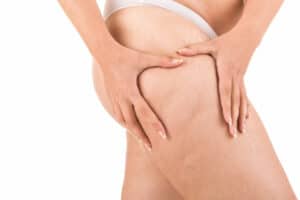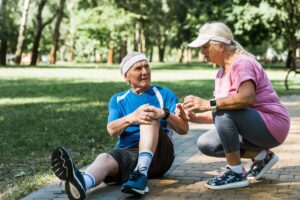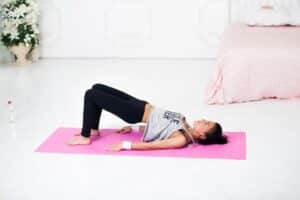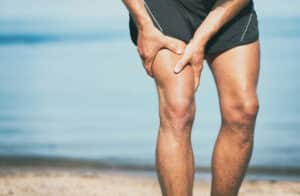Free download: Top 10 Natural & Easy Remedies for Joint Pain from Home. Learn these helpful remedies.
Estimated Reading Time: 6 minutes read
Over the years, we have un-learned how to sit, stand, and even lay down properly. That’s why we’re taking it back to the basics, and re-learning the right movements to keep our bodies solid, safe, and working for us as long as we can by learning the correct way of sit to stand up.
Standing up is something we began to do, naturally, before we’re one year old.
As we age, however, our muscles naturally grow weaker and more flaccid, causing us to overcompensate using the wrong muscles that can often lead to new injuries or even wake up an old one.
We all ‘un-learn’ how to sit, stand, and even lay down properly. And we have to “re-learn” some of the basics to keep our bodies solid, safe, and working for us as long as we can.
This is what’s called proper “body mechanics” — a fancy term to explain how we use our body.
For example, my kids. Younger children – say 2-3 years old – watch TV while sitting on the floor in a perfectly erect posture, even though they aren’t leaning against anything. But as soon as they hit 4 years old, they slump their spine and sit in a more “relaxed” manner.
So, I’d like to help you re-learn the proper way to stand up from a seated position AND how to use the right muscles when standing up.
Table of Contents
3 Key Muscle Groups Used to Stand Up From a Seated Position
Muscle contraction begins when the brain sends a signal throughout the body (via the nervous system) to trigger specific muscle groups to perform specific actions.
In the case of standing up from a seated position, the following muscles are triggered:
1. Glutes (aka “Butt Muscle”)
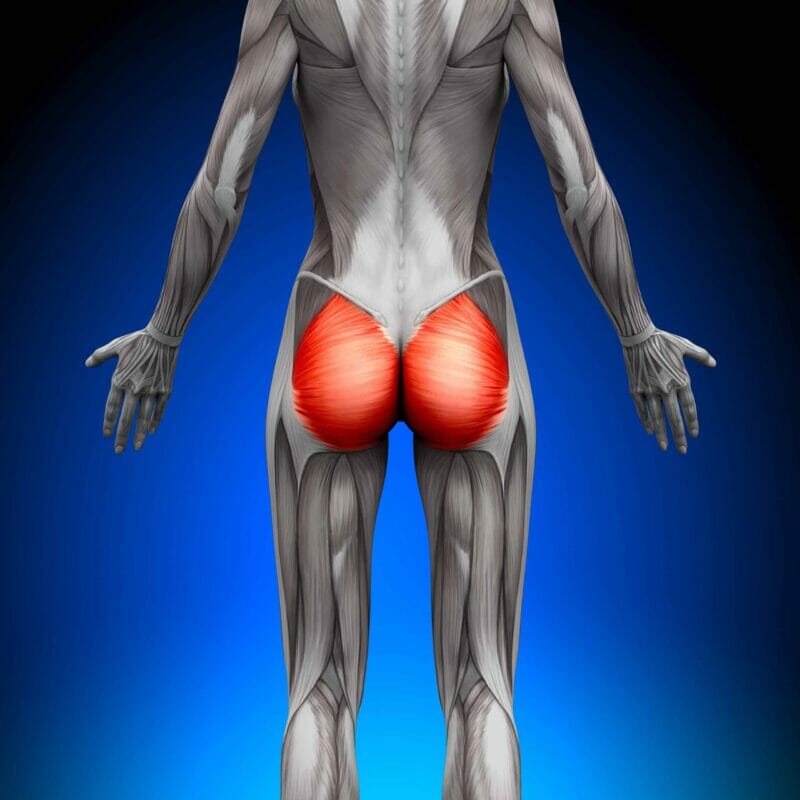
The glutes’ main actions are to extend and laterally rotate the hip joint. And, in working together with the hamstrings, they allow our body to extend from a bent-over (or seated) position into a standing one by pulling the hips up and forward.
2. Quadriceps
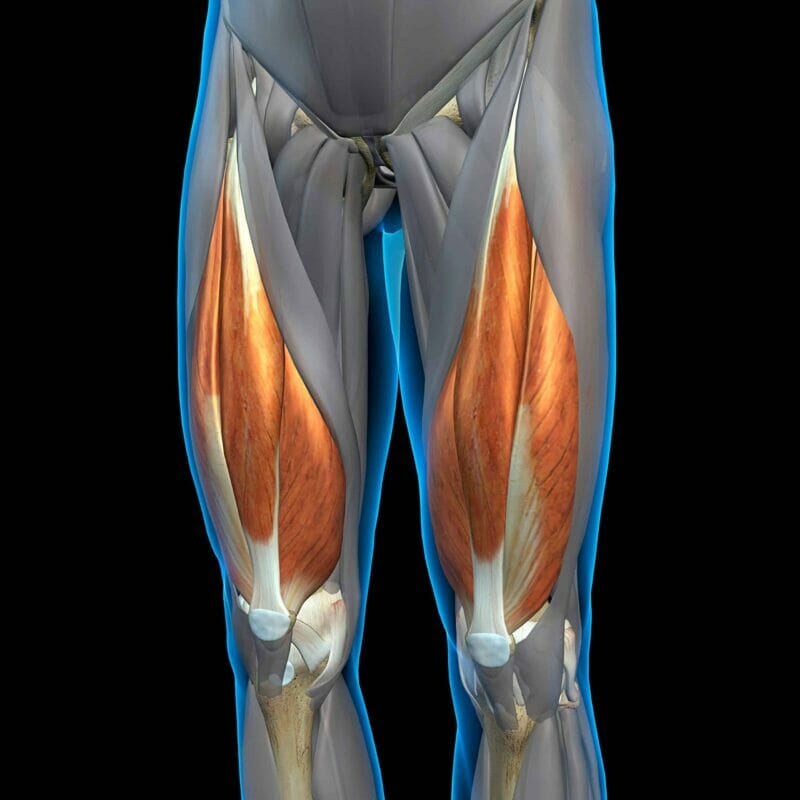
The quads are on the front part of the thigh, and when contracted, they act to straighten our leg at the knee joint. As the hips rise, the quadriceps are triggered to extend the rest of our legs until we are in a complete stand.
As the quadriceps stretch over the kneecap (patella), they also help hold the kneecap in a groove at the end of the thigh bone — in its proper location.
3. Core
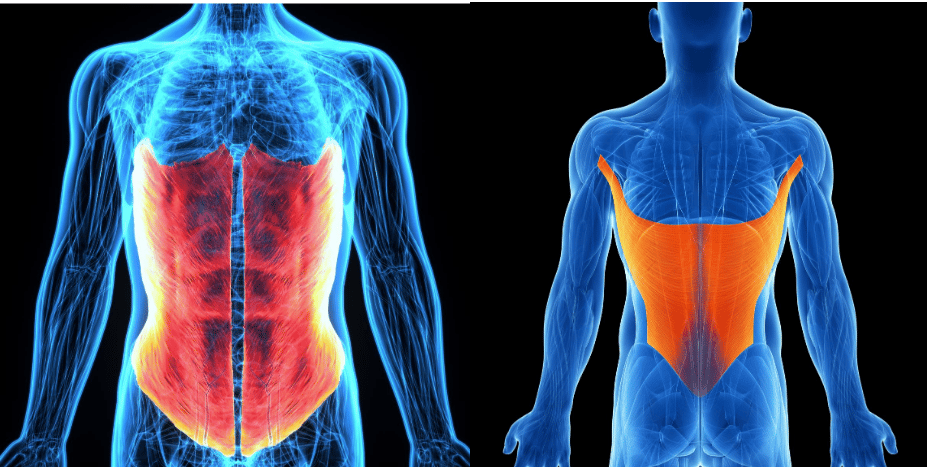
The pelvic floor muscles, transverse abdominis, multifidus, inner and outer obliques, rectus abdominis, erector spinae, and diaphragm are the main muscles included in “the core.”
While the names sound complicated, the role of our core is not. Our core muscles — both in the front and back — stabilize our body, allowing us to move in many directions as well as having the proper balance to avoid falls.
Common Mistakes People Make When Standing Up
Over time, whether through lack of practice or previous injuries, it becomes more difficult for us to connect to the muscles above.
Our brain sends the signal but somethings not right. Our body can’t remember what is the correct way to stand up.
Improper muscles can take over the movement or a pain signal is sent back… often leading us to the following standing mistakes:

Mistake #1: Allowing Our Knees to Collapse Inward
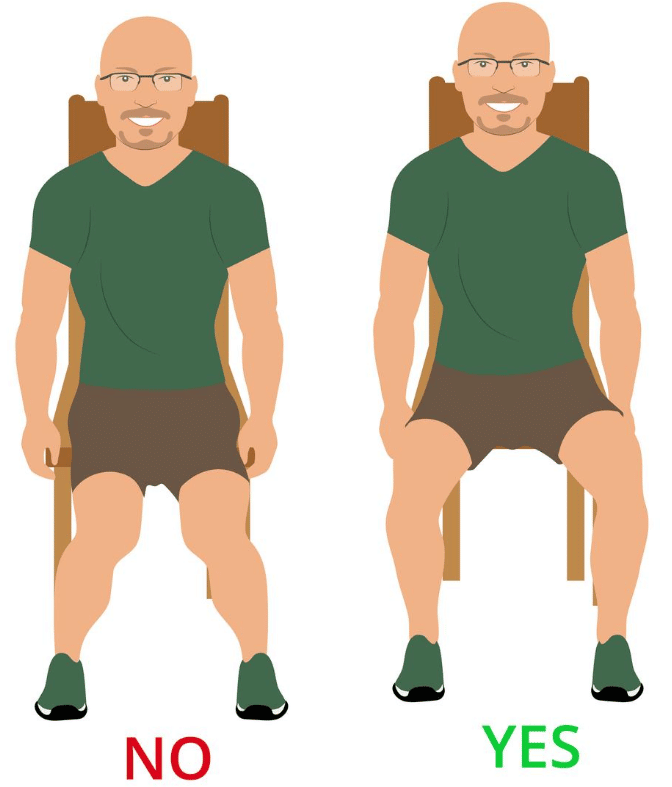
Oftentimes, we experience knee pain when standing from a sitting position. When we can’t properly connect to our glutes, we allow our knees to cave inward.
This means that our toes and knees are pointing in opposite directions, causing a shearing force against the knee joint.
By activating, or squeezing, your glute muscles we can laterally rotate our hips to drive our knees out and over our toes.

Mistake #2: Using the Arms for More Than Support
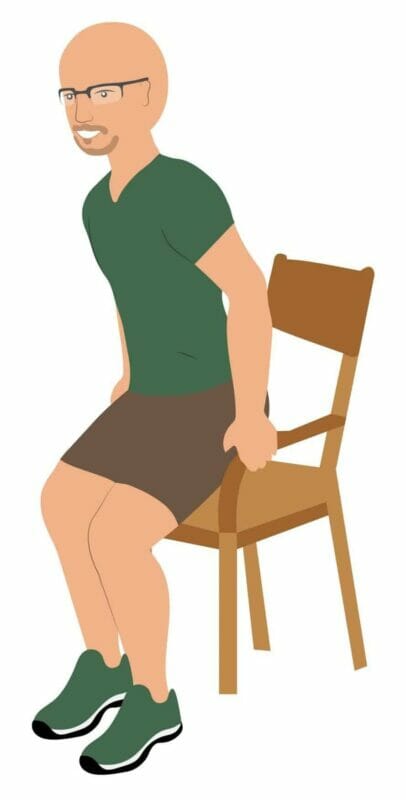
While chairs with armrests are nice for sitting, it’s easy to overuse them when standing… especially if we suffer from back pain.
When our brain receives that pain signal when trying to brace our core, it has to find a different movement to create the desired result (standing).
This type of movement puts too much pressure on your upper extremity joints which weren’t meant for that weight in a twisted position.

Mistake #3: Pushing on Our Knees to Get Up
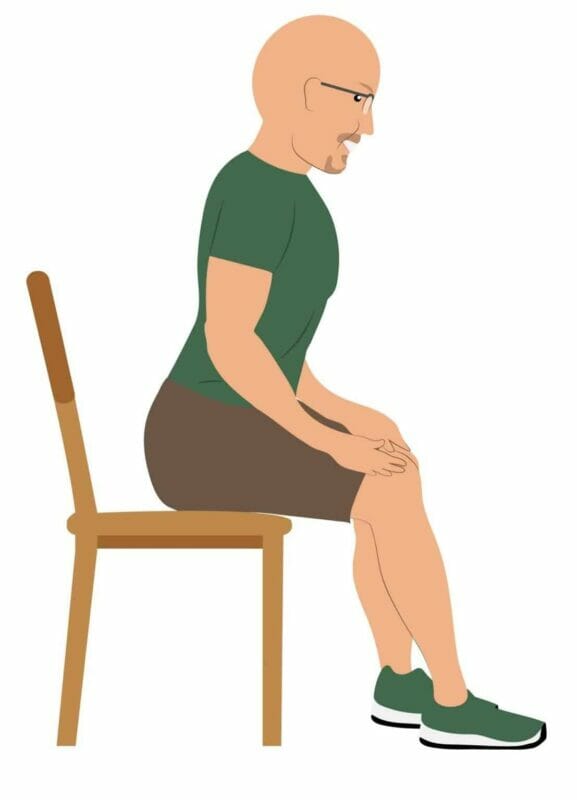
Another result of back pain is the strenuous bent-over position causing us to push down on our knees to stand up.
If we are trying to get up, pushing down on our knees is actually making it harder. While the quadriceps work to extend our leg, our hands are forcing the knee joint down, creating a stalemate between the two movements.

Mistake #4: Rising from Too Low a Surface
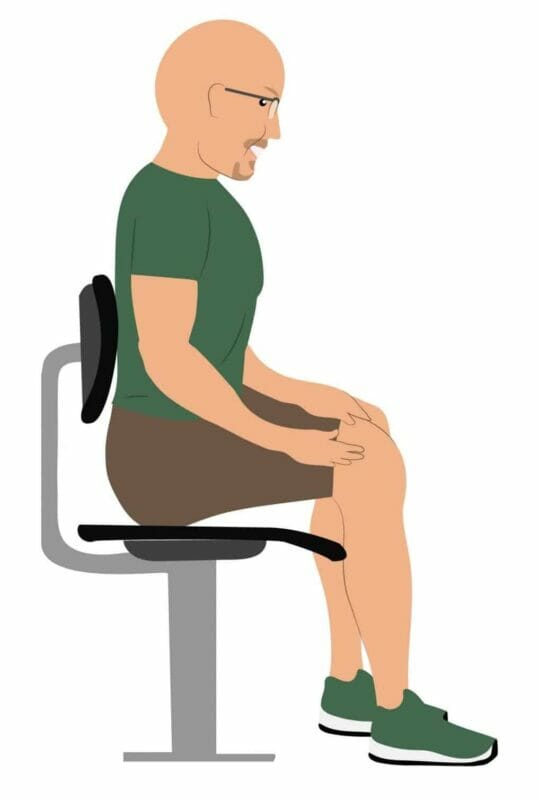
Our body movements work through mechanical systems that utilize different leverage points. These leverage points are our joints, and when the angle of the joint is too steep or shallow, our muscles have to work so much harder to get the job done.
So why not give yourself a mechanical advantage? Try putting a pillow underneath your before getting up from a low couch, recliner, or car seat.
The Correct Way To Stand Up From a Seated Position
Now that you know the right muscles to trigger your standing movement… and the common mistakes we often make when getting to our standing position, it’s time to learn how to avoid them.
Follow the below steps and video to ensure you’re standing safely:
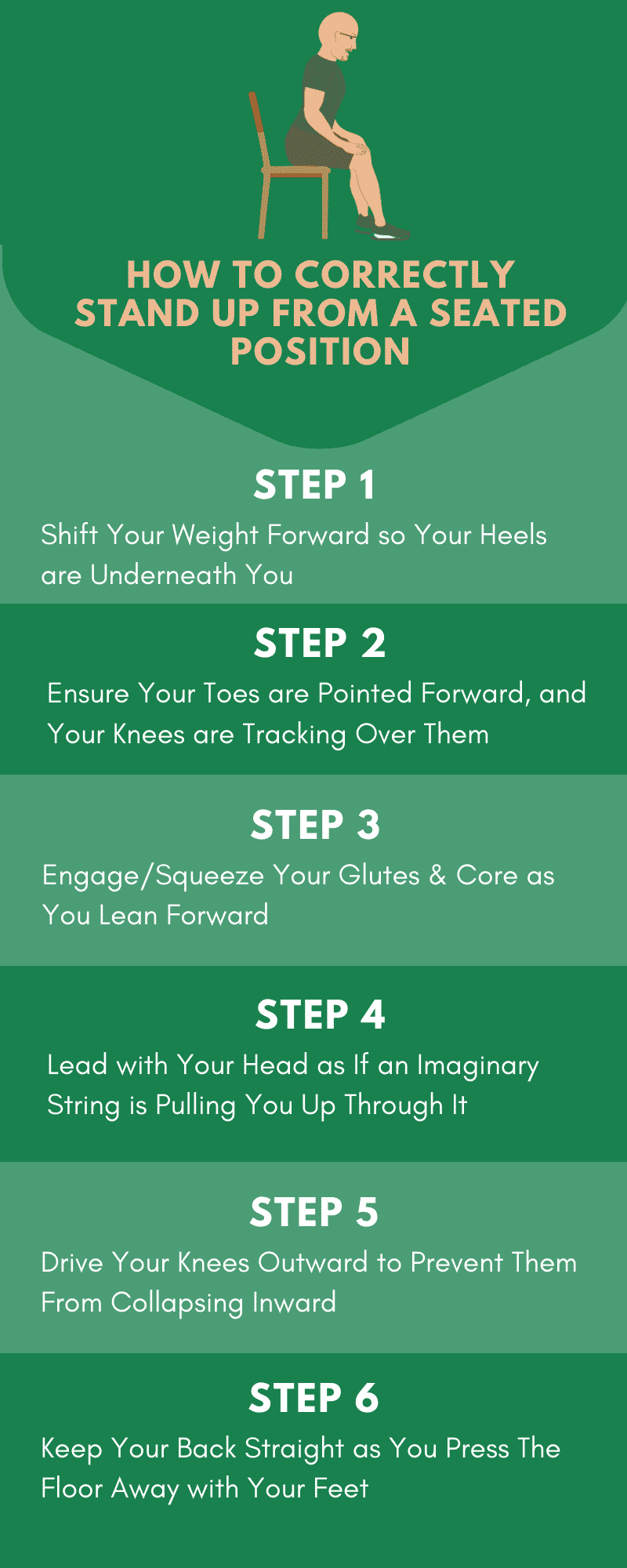
Practice Makes Perfect: Turn Sit to Stand into an Exercise
The capacity to get up from a chair makes an immense difference in daily life. Important tasks such as getting up from the bathroom, out of bed, and of course out of a chair are made pain-free once again.
So how do you improve your ability to stand up correctly? By doing it over and over again! Turn the above steps into an exercise by repeating the movement 5 times.
This will help train your body to correctly move… and improve your body mechanics!









